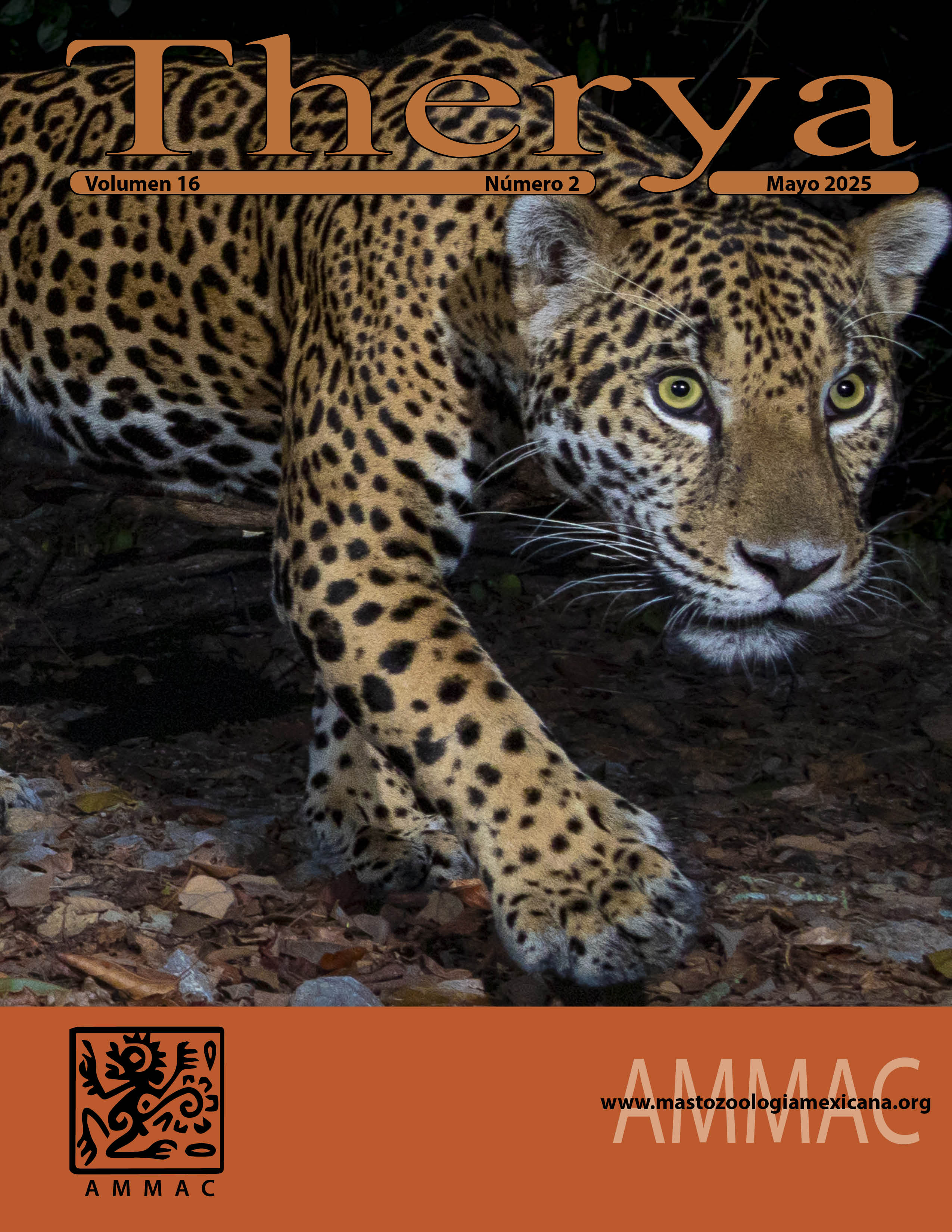Population parameters of two Sympatric Kangaroo Rats: Dipodomys merriami and Dipodomys nelsoni
Keywords:
Chihuahuan desert; density; desert rodents; Heteromyidae; precipitation; temperatureAbstract
The dynamics of climatic conditions cause diverse changes in organisms’ populations. Species as the kangaroo rats (Dipodomys) have shown sensitivity to some climatic conditions variables such as the precipitation and temperature. For this reason, it is important to understand the relationship between these conditions and species, especially when Dipodomys species are considered keystone species and ecosystem engineers. The capture-recapture technique was performed monthly from 2012 to 2016. Total individual counts, age, reproductive condition, weight, and sex of Dipodomys merriami and D. nelsoni were determined and recorded. We analyzed the frequencies, age, reproductive status, sex ratio, and weight of sampled species. Daily temperature and precipitation data of the study area were analyzed with population parameters and frequency data. Further, temperature and precipitation from 2012 to 2016 in the study area were analyzed in regard with studied species frequencies. The research was conducted in two environments: shrubland and grassland in the Chihuahuan desert. The results showed that D. merriami was the most abundant species; however, the frequencies from the two species were higher in the shrubland. Moreover, there was no statistic relationship between species’ frequencies and temperature, but there was a tendency with precipitation. Overall, the number of males and females of the two species was similar. The most found age category individuals was adults, most frequent reproductive status were non-pregnant females and males with abdominal testicles. Weight of individuals was different between species and age categories sub-adults and adults. The patterns are comparable to those found in other species of this genus. Results from this research provide information needed to take the required actions regarding the management and conservation of species with restricted distribution, such as D. nelsoni.
Downloads
Downloads
Additional Files
Published
How to Cite
Issue
Section
License
THERYA is based on its open access policy allowing free download of the complete contents of the magazine in digital format. It also authorizes the author to place the article in the format published by the magazine on your personal website, or in an open access repository, distribute copies of the article published in electronic or printed format that the author deems appropriate, and reuse part or whole article in own articles or future books, giving the corresponding credits.










